-
Enhanced rock mass rating prediction from tunnel face imagery: A decision-supportive ensemble deep learning approach Eng. Geol. (IF 6.9) Pub Date : 2024-07-14 Yejin Kim, Tae Sup Yun
Ensuring safety in tunnel construction necessitates a rapid and objective evaluation of exposed tunnel faces for proactive rock mass risk assessment. The diversity of rock types and discontinuities contributes to structural complexity and local variability, introducing subjectivity and uncertainty in traditional evaluations based on the experience of field engineers. In this study, a convolutional
-
Model and new imbalance thrust force method mechanical model for thrust-type soil landslides Eng. Geol. (IF 6.9) Pub Date : 2024-07-14 Luo Senlin, Huang Yu, Tao Zhigang, Mao Wuwei, Wang Huajin, He Manchao
The slice method used in traditional slope stability analysis has been improved, but the development of monitoring technology means that its assumption of the rigid contact condition has become inapplicable. This study considered the case of the Ya'an Baoxing landslide, which is a thrust-type soil landslide in Sichuan Province (China). First, on the basis of the Imbalanced Thrust Force Method, a mechanical
-
3D deformation velocity field analysis and TEM method to detect the tectonic influence on the land subsidence in Zamora, Mexico Eng. Geol. (IF 6.9) Pub Date : 2024-07-09 Cecilia Irene Villaseñor-Reyes, Víctor Manuel Hernández-Madrigal, Omar Delgado-Rodríguez, Jorge Alejandro Guevara-Alday, Netzahualcóyotl Flores-Lázaro
The city of Zamora is situated in a tectonic basin and, according to previous interferometric studies, has been experiencing sinking up to 13 cm/yr (2007-2011). Although the reported subsidence pattern (WNW-ESE) is similar to the orientation of the regional fault system, there is a lack of detailed studies to establish the connection between this phenomenon, the thickness of sediments, and the basement
-
A micro-meso coupled model for coral reef rocks based on CT Scanning Eng. Geol. (IF 6.9) Pub Date : 2024-07-07 Dengfeng Sang, Shoulong Zhang, Peijun Xie, Liqun Tang
The coral reef rock has a rich porous structure, and establishing an entity model with a realistic porous structure will do great good to study the mechanical behavior and its mechanisms. However, the pore's characterized size of coral rocks spans four orders of magnitude from micro to scales (1 μm to 10 mm). This requires a large specimen size and a very small element size in the model, which leads
-
Assessing the strength of deep-sea surface ultrasoft sediments with T-bar penetration: A machine learning approach Eng. Geol. (IF 6.9) Pub Date : 2024-07-07 Xingsen Guo, Xiangshuai Meng, Fei Han, Hong Zhang, Xiaolei Liu
With the expansion of marine resource utilization, geological disaster prediction, and ecological protection in deep-sea regions, accurate identification of deep-sea engineering geological environments has become paramount, highlighting the significance of understanding the mechanical characteristics of deep-sea surface ultrasoft sediments (DSUSs). However, DSUSs typically exhibit low strength, high
-
Liquefaction effects in the city of Gölbaşı: from the analysis of predisposing factors to damage survey Eng. Geol. (IF 6.9) Pub Date : 2024-07-05 A. Flora, E. Bilotta, F. Valtucci, T. Fierro, R. Perez, F. Santucci de Magistris, G. Modoni, R. Spacagna, M.K. Kelesoglu, S. Sargin, E. Altinok, S. Oztoprak, I. Bozbey, N. Aysal
The Kahramanmaraş seismic sequence of February 6th, 2023, caused extreme damage and a significant number of casualties across a large region of Turkey and Syria. The paper reports on the survey activities carried out by the authors in the city of Gölbaşı, where extensive liquefaction took place. The damage to the built environment caused by liquefaction differs from that caused by typical inertial
-
Estimation of site-specific amplification function from quarter-wavelength velocity profile and its application to obtain local amplification maps Eng. Geol. (IF 6.9) Pub Date : 2024-07-05 Francesco Panzera, Paolo Bergamo, Afifa Imtiaz, Donat Fäh
Quarter-wavelength (QWL) velocity refers to the S-wave velocity at a depth equal to one-fourth of the wavelength of the seismic waves. It provides valuable information about the characteristics of the subsurface material properties affecting seismic waves propagation. The Swiss Seismological Service (SED) network, with over 200 stations across different lithologies, offers a rich dataset to implement
-
Integrating real-time sensor data for improved hydrogeotechnical modelling in landslide early warning in Western Himalaya Eng. Geol. (IF 6.9) Pub Date : 2024-07-05 Kunal Gupta, Neelima Satyam
This study presents a comprehensive investigation into developing a real-time monitoring framework for a localized landslide early warning system (LEWS), focusing on the hydrological dynamics of an unsaturated slope near the Joshimath Badrinath Highway in Uttarakhand, India. Considering the steepness of the slope and its adjacency to the highway, continuous monitoring and stability assessment are crucial
-
Subsurface velocity structures at the Egyptian seismological network stations retrieved by diffuse field assumption for Earthquakes Eng. Geol. (IF 6.9) Pub Date : 2024-07-05 Mostafa Thabet, Khaled Omar
Retrieving detailed subsurface velocity structures down to the seismic bedrock at any given site is a crucial step to delineate the site amplification factors accurately and precisely. The present research work contributes first new estimations for detailed velocity structures down to the seismic bedrock beneath the Egyptian National Seismological Network (ENSN) stations, which are distributed in Egypt
-
Damage evolution of the bedding rock landslide and debris landslide under earthquakes in the Three-rivers Basin Eng. Geol. (IF 6.9) Pub Date : 2024-07-04 Chen Wang, Mingzhu Guo, Xueliang Chen, Kunsheng Gu, Yifei Gong, Yunpeng Qi, Dongdong Yuan, Chun Zhu, Bingbing Chen
The geological structure of the Three-rivers Basin is complex, with active tectonic movements and frequent earthquakes, resulting in fragile geological circumstances, frequent geo-hazard incidents, and the emergence of significant hazard cascades. Multiple earthquakes lead to frequent landslide disasters. Bedding rock and debris landslides are common disasters that threaten the Three-rivers Basin's
-
Macroscopic experimental study and microscopic phenomenon analysis of damage self-healing in salt rock Eng. Geol. (IF 6.9) Pub Date : 2024-07-04 Zongze Li, Yanfei Kang, Jinyang Fan, Marion Fourmeau, Jie Chen, Deyi Jiang, Daniel Nelias
Salt rock is characterized by a low porosity, low permeability and self-healing ability, and it is one of the most common materials used for underground energy storage and construction in underground nuclear waste repositories. Studying the healing of macroscopic cracks in salt rock under different conditions is important for ensuring the stability of the rock surrounding a salt cavern. To evaluate
-
Sensitivity analysis of hydraulic erosion and calibration of the erosion coefficient Eng. Geol. (IF 6.9) Pub Date : 2024-07-04 Hongyu Duan, Liangchao Zou, Vladimir Cvetkovic
Hydraulic erosion may pose a threat to the safety and sustainability of geo-related infrastructure, yet quantifying the intricate process of hydraulic erosion still poses a significant scientific and technical challenge. One important step in meeting this challenge is the formulation of a hydraulic erosion model with the erosion coefficient as a central controlling parameter. Calibration of the erosion
-
Shear-induced permeability evolution of natural fractures in granite: Implications for stimulation of EGS reservoirs Eng. Geol. (IF 6.9) Pub Date : 2024-07-03 Xuefeng Li, Fengshou Zhang, Nailing Xiu, Dingwei Weng, Bo Cai, Haifeng Fu
Permeability evolution of natural fractures during shearing is one of the critical issues in enhanced geothermal system (EGS). In this study, we conducted a series of numerical simulations of shear-flow tests under different normal stresses to investigate the permeability evolution and shear behavior of natural fractures during shearing. All numerical simulations in this study are executed based on
-
Mapping rockfall hazard and detecting precursory damage in rock slopes with passive seismic: Lessons from the La Praz case-study Eng. Geol. (IF 6.9) Pub Date : 2024-07-03 Pierre Bottelin, Ombeline Méric, Laurent Baillet, David Beniamine, Anne Lescurier
We conducted repeated successive passive seismic surveys on the La Praz unstable rock slope (∼13,000–15,000 m, Savoie, France), spanning over more than ten years. The last survey was conducted two months before its complete collapse in August 2023. We used the amplitude of Horizontal to Vertical Spectral Ratio at peak () to discriminate stable from unstable areas and delineate the fractures with major
-
Seismic performance prediction of a slope-pile-anchor coupled reinforcement system using recurrent neural networks Eng. Geol. (IF 6.9) Pub Date : 2024-07-02 Meng Wu, Xi Xu, Xu Han, Xiuli Du
Seismic performance prediction of slope reinforcement measures is an essential and significant problem in structure design and monitoring stage. Enlightened by the advancement of Recurrent Neural Network (RNN) in geotechnical engineering, this paper develops RNN models integrated with discrete wavelet transform and Dung Beetle Optimization (DBO) algorithms for predicting the dynamic response of slope-pile-anchor
-
Simulating landslides with the material point method: Best practices, potentialities, and challenges Eng. Geol. (IF 6.9) Pub Date : 2024-06-28 Francesca Ceccato, Alba Yerro, Gaia Di Carluccio
Advances in numerical methods have provided useful tools for investigating the complex behaviour of landslides, which can be a valuable support for landslide hazard assessment, planning, and design of mitigation measures. Among different methodologies, the Material Point Method (MPM) has recently grown in popularity, thanks to its ability to simulate large displacements and has been applied to simulate
-
Probabilistic capacity energy-based machine learning models for soil liquefaction reliability analysis Eng. Geol. (IF 6.9) Pub Date : 2024-06-28 Zening Zhao, Wei Duan, Guojun Cai, Meng Wu, Songyu Liu, Anand J. Puppala
The energy-based method has been widely employed to evaluate soil liquefaction potential. A recent trend is to develop machine learning (ML) models to predict capacity energy. However, there is still a lack of statistical perspectives on energy-based ML models for liquefaction risk analysis. This study develops a rigorous Bayesian framework for characterizing uncertainties of two typical energy-based
-
Displacement and pressure of surrounding rock during shield tunnelling and supporting in low water content loess Eng. Geol. (IF 6.9) Pub Date : 2024-06-27 Haolan Feng, Fei Ye, Xingbo Han, Peiyuan Wang, Ziming Chen, Xiaoming Liang
Using a self-developed micro shield machine, a laboratory-scale experimental scheme for shield tunnelling and supporting was designed, and the soil displacement law and earth pressure on the segments during tunnel construction were studied. Based on a nonlinear elastic constitutive model describing the characteristics of loess, the UMAT subroutine was redeveloped and verified by conventional triaxial
-
Grey relation analysis and multiple criteria decision analysis method model for suitability evaluation of underground space development Eng. Geol. (IF 6.9) Pub Date : 2024-06-25 Xin Ni, Jiang Li, Jiangyan Xu, Yun Shen, Xiuguo Liu
Underground space is an important asset for urban development, but its development comes with inherent risks. Therefore, in order to evaluate the risk of underground space development, we utilized 3D modeling and grey relational analysis (GRA) for decision-making, and evaluated underground space development through attribute modeling. First, the underground space was categorized into 4 layers according
-
A practical stability/instability chart analysis for slope large deformations using the material point method Eng. Geol. (IF 6.9) Pub Date : 2024-06-24 Shunxin Xu, Bin Wang, Di Wang, Jianhua Zhang
Slope instability and failure may lead to severe geological disasters, which are a primary concern of geotechnical engineering. To estimate the safety of a slope, Taylor (1937) proposed a stability chart that evaluates the factor of safety (FOS) of a homogeneous slope using several simple geometric and material parameters. This study extends the stability chart further into the field of failure, summarising
-
The normal stiffness effect on fault slip mechanical behaviour characteristics Eng. Geol. (IF 6.9) Pub Date : 2024-06-24 Luosong Zhang, Chuanqing Zhang, Ning Liu, Zhi Fang, Aoge Zhou, Qiming Xie, Guojian Cui
The stress state of a fault plane influences the mode of sliding and characteristics of slide behaviour. Existing researchers have mainly focused on studying the effect of shear stiffness on fault behaviour under the constant normal load (CNL) boundary conditions. However, the impact of the normal stiffness effect of deep faults on fault sliding stability and seismic source parameters remains uncertain
-
Cover collapse sinkhole formation is delayed in time and uncorrelated to distance from quarry in a long-term study of a karst basin Eng. Geol. (IF 6.9) Pub Date : 2024-06-23 Michael J. Byle, Ira D. Sasowsky, Anthony J. Rana
Collapse sinkholes are problematic for the hazards they bring to property, infrastructure, and human life but the prediction of their formation in time and space remains elusive. We make use of long-term data gathered in a small, highly monitored, hydrologically constrained basin; Primrose Creek, Bucks County, Pennsylvania, USA, to examine the relation between groundwater extraction, precipitation
-
Co-seismic hillslope weakening Eng. Geol. (IF 6.9) Pub Date : 2024-06-23 Chuanjie Xi, Luigi Lombardo, Xiewen Hu, Hakan Tanyas
Reduction in shear strength (RSS) of hillslope materials due to earthquakes have been rarely discussed numerically in regional scale analyses. Despite the limited literature, an empirical relationship between peak ground acceleration (PGA) and RSS was proposed based on Newmark's permanent-deformation analysis coupled with static limit equilibrium approach. However, the empirical relationship is solely
-
Critical state behaviour of an unsaturated kaolin mixture Eng. Geol. (IF 6.9) Pub Date : 2024-06-22 Ke Chen, Xuzhen He, Fayun Liang, Daichao Sheng
In this paper, a series of suction-controlled triaxial tests were conducted to investigate the hydromechanical behaviour of an unsaturated kaolin mixture. The studied variables included the mean net stress, suction, and initial dry density. The suction was controlled over a wide range – in the span of 0–390 MPa using the axis translation method and the vapour equilibrium technique, aiming to holistically
-
Novel multi-spatial receptive field (MSRF) XGBoost method for predicting geological cross-section based on sparse borehole data Eng. Geol. (IF 6.9) Pub Date : 2024-06-18 Yashi Qiu, Ning Zhang, Zhenyu Yin, Yu Wang, Changjie Xu, Pin Zhang
Due to the complex spatial features of geological formation, it remains a significant challenge to accurately predict geological cross-sections from limited borehole data. This study develops an innovative multi-spatial receptive field (MSRF) XGBoost approach, which encompasses classification and identification modules to forecast geological cross-sections using sparse borehole data. The classification
-
Prediction of local site influence on seismic vulnerability using machine learning: A study of the 6 February 2023 Türkiye earthquakes Eng. Geol. (IF 6.9) Pub Date : 2024-06-18 Mustafa Senkaya, Ali Silahtar, Enes Furkan Erkan, Hasan Karaaslan
This study uses machine learning to analyze local seismic features' influence on damage from the 6 February 2023 Türkiye Earthquakes.The input features include Vs (the average shear wave velocity to a depth of 30 m), f (the predominant frequency of the site), A (HVSR ratio for the site), and EB (engineering bedrock depth), along with the target feature of damage status for 44 locations. Machine learning
-
3D Effect and countermeasure of 2D geoelectrical imaging of a subsurface linear structure Eng. Geol. (IF 6.9) Pub Date : 2024-06-17 Yin-Chun Hung, Haoran Wang, Po-Lin Wu, Hsin-Chang Liu, Chih-Ping Lin
This study was prompted by a field observation of a resistivity anomaly in a 2D Electrical Resistivity Tomography (ERT) scan during a fault investigation, suspected to be an artifact from an unnoticed 3D effect. Numerical simulations explored potential 3D effects when the survey line is not perpendicular to the strike of a linear feature, violating the ideal 2D assumption. Artifacts similar to the
-
Research on the creep energy evolution law and damage model of deep sandstone with microporous defects Eng. Geol. (IF 6.9) Pub Date : 2024-06-15 Dongxu Chen, Laigui Wang, Shanyong Wang, Chuang Sun, Yunhe Ao, Jiamin Wang
Pore defects in rocks represent a significant factor contributing to creep hazards in rock engineering. To investigate the sensitivity of rock creep characteristics to porosity, prefabricated pore tests and creep tests were conducted on red sandstone obtained from the Yuezhi Mountain Tunnel in Sichuan Province, China. The energy theory and the developed Clumps with random geometry (CRG) model were
-
Integrated study on buried pipelines, co-seismic landslides, and magnitude conversion for 2023 Türkiye earthquake Eng. Geol. (IF 6.9) Pub Date : 2024-06-15 Arindam Das, Tanmoy Das, Chaidul Haque Chaudhuri, Deepankar Choudhury
Türkiye is known for its intricate tectonic structure and high seismic activity, which makes in-depth research on earthquakes necessary. This research paper presents a multifaceted examination of earthquake impact in Türkiye, encompassing critical elements of seismic vulnerability with a special focus on the latest twin earthquake of February 6, 2023. Firstly, a three-dimensional finite element (FE)
-
A simplified single-phase depth-averaged model for rock-ice avalanche movement considering ice melting Eng. Geol. (IF 6.9) Pub Date : 2024-06-15 Wei Liu, Siming He
This paper considers a simplified single-phase depth-averaged model for simulating rock-ice avalanche movement, which incorporates an energy conservation equation to describe the evolution of mass temperature, accounting for the transition from negative to positive values and vice versa. Additionally, this model introduces a saturation parameter that quantifies the impact of pore water pressure on
-
Erosion, deposition and breach evolution of landslide dams composed of various dam material types based on flume tests Eng. Geol. (IF 6.9) Pub Date : 2024-06-13 Chenyi Ma, Ming Peng, Limin Zhang, Zhenming Shi, Jiawen Zhou, Hongxin Chen, Yan Zhu, Zhi Li
The accurate and rapid prediction of breach outflow rates of landslide dams is crucial for effective risk assessment and mitigation strategies. However, challenges arise due to the complexities associated with breaching mechanisms. In this study, 12 flume tests were conducted on landslide dams composed of various material types, including fine-grained, coarse-grained, well-graded, and gap-graded materials
-
Analysis of pile end bearing capacity in Holocene interlayered silty deposits based on CPT soil behavior type index Eng. Geol. (IF 6.9) Pub Date : 2024-06-12 M.R. Khodayari, S.M. Mousavizadeh, M.M. Ahmadi
The existing correlations between pile and cone penetration test (CPT) results often lack versatility for silty geomaterials, as they were primarily developed for clays or sands. To establish meaningful correlations, it is essential to understand the geology of the environment under examination. The CPT and its derived parameters, including the Soil Behavior Type (SBT) index, have proven to provide
-
Seismic fragility analysis of buried pipelines under Kahramanmaraş ground motions Eng. Geol. (IF 6.9) Pub Date : 2024-06-11 Xiaoqiang Wang, Junyan Han, Anqi Kang, M. Hesham El Naggar, Huiquan Miao, Chengshun Xu
This paper aims to evaluate the failure probability of buried pipelines under pulse-like ground motions based on the seismic records detected during the Kahramanmaraş earthquake in Turkey. The incremental dynamic analysis (IDA) method was used to evaluate the vulnerability of continuous and segmented steel pipes, taking into account the corrosion effect in alkaline and near-neutral soil environments
-
Geo-constrained clustering of resistivity data revealing the heterogeneous lithological architectures and the distinctive geoelectrical signature of shallow deposits Eng. Geol. (IF 6.9) Pub Date : 2024-06-07 Paolo Ciampi, Leonardo Maria Giannini, Giorgio Cassiani, Carlo Esposito, Marco Petrangeli Papini
-
A frost heave pressure model for fractured rocks subjected to repeated freeze-thaw deterioration Eng. Geol. (IF 6.9) Pub Date : 2024-06-07 Qi Zhang, Yi Liu, Feng Dai
Rock engineering in the Tibetan Plateau is usually suffered severe freeze-thaw (F-T) deterioration, triggering numerous geotechnical engineering disasters. As the essential triggering factor of F-T damage, the frost heave pressure (FHP) in rocks should be quantitatively described and predicted. In this study, a novel theoretical model is established and validated to estimate the critical entire evolution
-
Three-dimensional reconstruction of subsurface stratigraphy using machine learning with neighborhood aggregation Eng. Geol. (IF 6.9) Pub Date : 2024-06-06 Yue Hu, Ze Zhou Wang, Xiangfeng Guo, Hardy Yide Kek, Taeseo Ku, Siang Huat Goh, Chun Fai Leung, Ernest Tan, Yunhuo Zhang
In engineering geology and geotechnical engineering, it is well recognized that subsurface soils/rocks are natural materials and exhibit variability in stratigraphy due to the complex geological formation processes they have undergone. Knowledge of subsurface soil stratigraphy is of great importance to geotechnical engineers. However, accurate and reliable interpretation of subsurface soil stratigraphy
-
Mitigation of rockfall geohazards: Full-scale investigation of the performance of a practical baffle design for direct use in the field Eng. Geol. (IF 6.9) Pub Date : 2024-06-06 Jianting Du, Dongsheng Chang, Chris Lee, Yuchen Su, Clarence Edward Choi, Jiaqi Zhang
To arrest rockfall boulders, baffles are constructed as steel members affixed on top of a concrete footing. Existing designs aim to prevent any footing rotation and steel member bending. As such, existing baffle designs require massive reinforced concrete footings and complex bolt and weld connections. Such designs have limited constructability and result in complex failure mechanisms (i.e., tensile
-
Laboratory investigation on slip behaviors of fault induced by cyclic confining pressure Eng. Geol. (IF 6.9) Pub Date : 2024-06-06 Han Liu, Hu Si, Dayang Xu, Kun Long
Stress cycle disturbances induced by underground excavation can trigger fault activation and slip, leading to earthquakes and other dynamic hazards. This study investigates shear slip induced by cyclic unloading in sawed faults through laboratory experiments. We examine the effects of unloading rate, amplitude, and initial stress on fault slip behavior. Results suggest that cyclic unloading induces
-
True triaxial test and DEM simulation of rock mechanical behaviors, meso-cracking mechanism and precursor subject to underground excavation disturbance Eng. Geol. (IF 6.9) Pub Date : 2024-06-05 Zhi Zheng, Shouxin Li, Qiang Zhang, Hao Tang, Guofeng Liu, Shufeng Pei, Gaoming Lu
Mechanical excavation or blasting generates stress waves that rapidly dissipate in the surrounding high-geostress rock, causing microdynamic disturbances. These disturbances trigger microcracks within the damaged rock, even inducing engineering disasters. However, the fracture behaviors and mechanisms of rockmass subjected to excavation disturbances under three-dimensional geostress remains unclear
-
Evaluating the long-term barrier performance of fractured granite for nuclear waste disposal: Impact of fast water-conducting path Eng. Geol. (IF 6.9) Pub Date : 2024-06-04 Yingtao Hu, Wenjie Xu, Liangchao Zou, Liangtong Zhan, Yunmin Chen, Ju Wang, Zhenxue Dai
-
Rock discontinuities characterization from large-scale point clouds using a point-based deep learning method Eng. Geol. (IF 6.9) Pub Date : 2024-06-04 Qian Chen, Yunfeng Ge, Huiming Tang
Rock discontinuities are essential for the mechanical behavior and stability of rock mass. Previous approaches for characterizing discontinuities either rely on limited handcrafted features (point normals, point curvatures, point densities, and so on) or fail to classify discontinuities, making them unsuitable for complex and large-scale scenes. To cope with these problems, an end-to-end point-based
-
A closer look into variables controlling hillslope deformations in the Three Gorges Reservoir Area Eng. Geol. (IF 6.9) Pub Date : 2024-06-04 Hongwei Sang, Ling Chang, Chuanjie Xi, Ashok Dahal, Luigi Lombardo, Cees J. Van Westen, Bin Shi, Hakan Tanyas
Hillslope stability problems experienced in Three Gorges Reservoir Area after the water impoundment in the reservoir have been widely studied in the literature. However, the contributions of morphometric, meteorological and seismic variables altering hillslope deformations and the variation in their roles over time is yet to be explored. This study aims at addressing this gap in the literature. To
-
Influence of the curing stress effect on the stiffness degradation curve of a silt stabilized with lime and cement Eng. Geol. (IF 6.9) Pub Date : 2024-05-29 Lucile Pigeot, Nathalie Dufour, Hélène Calissano, Fabienne Dermenonville, Anthony Soive
This study investigated the shear modulus degradation curves of reconstituted stabilized soil specimens and their evolution during curing up to 270 days. An experimental protocol is proposed to get as close as possible to the in situ curing conditions of a chemically (lime and hydraulic binder) and mechanically (compaction) improved soil placed in a high-rise geotechnical structure. Innovative solutions
-
Cyclic loading deformation response and microstructure evolution of undisturbed loess subjected to pre-humidification process Eng. Geol. (IF 6.9) Pub Date : 2024-05-29 Hao Wu, Shuai Shao, Shengjun Shao, Zechi Wang, Guangyi Yan
-
Microstructure size and packing of fracture surface on the nonlinear breakage mechanical response of different marbles under cyclic loading Eng. Geol. (IF 6.9) Pub Date : 2024-05-29 Hu-dan Tang, Ming-li Zhu, Zhen-hua Li
The microstructural properties of fracture surfaces are a remarkable reflection of the nonlinear mechanical properties of rocks, which have not been thoroughly evaluated to date. In order to understand the contributions of microstructure size and packing to the nonlinear mechanical response, both micro- (field emission scanning electron microscopy (SEM) experiments on failure specimen section) and
-
Rockburst mitigation mechanisms of pressure relief borehole and rock bolt support: Insights from granite true triaxial unloading rockburst tests Eng. Geol. (IF 6.9) Pub Date : 2024-05-29 Fuqiang Ren, Chun Zhu, Murat Karakus, Manchao He
The construction of the deep-buried tunnels of the Sichuan-Tibet railway is facing severe rockburst disasters. Pressure relief boreholes and rock bolt support are effective methods for mitigating rockburst in hard rock. However, the mechanisms and differences in control effectiveness of these methods for different types of rockburst have yet to be revealed. This paper presents the results of two true
-
Development of novel artificial intelligence functions based on 3D finite element method using February 6 Kahramanmaraş Seismic Records for earthquake effects prediction in various soils Eng. Geol. (IF 6.9) Pub Date : 2024-05-28 Arda Burak Ekmen, Yusuf Avci
The seismic events on February 6, 2023, in the province of Kahramanmaraş/Türkiye, caused severe damage and the collapse of numerous structures due to underlying soil issues. This catastrophe revealed the inevitable requirement to evaluate the effect of soil profile on structural safety. In the present study, novel artificial intelligence (AI) functions based on the three-dimensional finite element
-
Mechanical effects of nanomaterials on the residual shear strength of dry sandy mixtures: Implication for the high mobility of rock avalanches Eng. Geol. (IF 6.9) Pub Date : 2024-05-28 Shengshan Wu, Gonghui Wang
Nanoparticles found in rock avalanches and natural faults were inferred to be the reason for the ultra-low shear resistance of the materials along the shear surface. Nevertheless, this inference has not been physically verified yet. To investigate the role of nanoparticles in the shear behavior of granular materials, we conducted a series of ring shear tests on silicon dioxide nanoparticles (SN), silica
-
Structural characterization and attempted displacement interpretation of the Baishuihe landslide using integrated geophysical methods Eng. Geol. (IF 6.9) Pub Date : 2024-05-27 Kai Lu, Fan Li, Jianwei Pan, Kaitian Li, Zhenyu Li, Peng Wang
The Baishuihe landslide, a typical large-scale deposit landslide in the Three Gorges Reservoir area, has attracted considerable societal and scholarly attention. Since 2003, 11 displacement monitoring points have been established on the landslide mass for monitoring displacement data. Displacement monitoring data from 14 years have been widely applied in landslide displacement prediction research.
-
Arching effect in slopes under excavation: Classification and features Eng. Geol. (IF 6.9) Pub Date : 2024-05-24 Kun Fang, Shixun Jia, Huiming Tang, Ruizhi Zhou, Zheng Kong, Yulei Fu, Penju An, Bocheng Zhang, Qiong Wu
Classifying excavation-induced slopes considering the arching effect and understating the features are crucial for determining the appropriate designs for excavation, assessing the long-term behaviors of excavations, and identifying potential failure modes. The objective of this study is to establish a classification system for excavation-induced slopes and to identify the features and applications
-
Microfabrics impact on rock salt geomechanical diversity – an experimental investigation Eng. Geol. (IF 6.9) Pub Date : 2024-05-23 Katarzyna Cyran, Tomasz Toboła, Paweł Kamiński
Geomechanical studies of rock salt serve as the foundation for designing and ensuring the long-term stability of storage caverns. Research conducted in recent years has shown that rock salt exhibit highly variable mechanical parameters. Even macroscopically similar rock salt samples from the same formation have very different mechanical parameters in standard strength tests. In this paper, the effect
-
Two-phase strategy for rapid and unbiased assessment of earthquake-induced landslides Eng. Geol. (IF 6.9) Pub Date : 2024-05-23 Shihao Xiao, Te Xiao, Ruochen Jiang, Haojie Wang, Luyu Ju, Limin Zhang
Co-seismic landslides can cause devastating consequences in seismically active mountainous regions. Rapid assessment of co-seismic landslides is essential in effective emergency response. A dilemma that hinders the assessment is the presence of a significant bias, either overestimating or underestimating the actual landslide hazard. To overcome this dilemma, this paper proposes a two-phase strategy
-
Challenges with using empirically determined geotechnical parameters for borehole stability evaluation in horizontal directional drilling Eng. Geol. (IF 6.9) Pub Date : 2024-05-23 Inshik Park, Chao Kang, Alireza Bayat
Geotechnical parameters required for estimating the maximum allowable annular pressure () in horizontal directional drilling (HDD) are often empirically determined based on the results from the standard penetration test (SPT). Despite the benefits of SPT, its use in practice could be challenging as the geotechnical parameters determined based on SPT results vary largely depending on the choice made
-
Comparative study of decoupled- and coupled-based predictive models for seismically-induced slope displacements during shallow crustal earthquakes Eng. Geol. (IF 6.9) Pub Date : 2024-05-22 Mao-Xin Wang, Chen-Yang Zhang, Dian-Qing Li, Wenqi Du
Various predictive models for the seismically-induced displacement () of flexible slopes during shallow crustal earthquakes are available in the literature, but the model-to-model difference of predictions remains unclear. This paper conducts a comprehensive comparative study of ten representative models based on scenario- and probabilistic-based displacement analyses. Explicit expressions are provided
-
Influence of geological uncertainty on longitudinal deformation of tunnel based on improved coupled Markov chain Eng. Geol. (IF 6.9) Pub Date : 2024-05-21 Qi-Hao Jiang, Jin-Zhang Zhang, Dong-Ming Zhang, Hong-Wei Huang, Jing-Kang Shi, Zhang-Lin Li
The complex geological condition encountered during excavation is the key challenge for tunneling projects. Therefore, tunnel design and construction require a comprehensive understanding of the subsurface geology. This study aims to reveal the effect of geological uncertainty on tunnel longitudinal deformation based on a reconstruction geological model using the improved coupled Markov chain method
-
Effects of bed pumice content on lahar erosion: An example from Changbaishan volcano, China Eng. Geol. (IF 6.9) Pub Date : 2024-05-19 Shengwu Qin, Jiangfeng Lv, Shuangshuang Qiao, Junjun Chen, Jingyu Yao, Feng Wan, Shuaiying Peng, Gohar Rehman, Xiaowei Liu
Understanding the erosion of sediments by lahars contributes to future modeling and hazard assessment. However, studying the erosion mechanism of lahars in the field is challenging due to their suddenness and danger. We conducted a series of experiments to investigate the erosion associated with five different bed sediments (with a volume percentage of pumice ranging from 3%–32%), four channel slopes
-
Promoting effect and microscopic mechanism of train-induced vibration on loess disintegration Eng. Geol. (IF 6.9) Pub Date : 2024-05-18 Shan Li, Jiading Wang, Kai Han, Li Wang, Dengfei Zhang, Haoyu Dong, Bo Cui
Loess disintegration aggravates slope erosion and triggers hazards such as spalling, landslides, and mudflows. Long-term vibrations along railways can change the microstructure of the loess, thereby affecting its disintegration characteristics. However, few studies have considered the effects of long-term vibrations caused by trains on the disintegration of intact loess. This study conducted disintegration
-
Probabilistic life-cycle landslide assessment subjected to nonstationary rainfall based on alternating stochastic renewal process Eng. Geol. (IF 6.9) Pub Date : 2024-05-17 Zhengying He, Mitsuyoshi Akiyama, Abdul Kadir Alhamid, Dan M. Frangopol, Yu Huang
The increasing intensity and frequency of rainfall due to climate change poses a significant risk of landslides in the future. Therefore, a methodology that accounts for the nonstationary effects of rainfall is needed to accurately assess future landslides. This study presents a novel framework for probabilistic life-cycle landslide assessment under nonstationary rainfall due to climate change based
-
Dynamic analysis of field-scale rockslides based on three-dimensional discontinuous smoothed particle hydrodynamics: A case study of Tangjiashan rockslide Eng. Geol. (IF 6.9) Pub Date : 2024-05-17 Chengzhi Xia, Zhenming Shi, Maomao Liu, Bo Li, Songbo Yu, Jianfeng Xue
To improve the understanding of the dynamic disastrous process of field-scale rockslides, a novel numerical approach, Three-dimensional Discontinuous Smoothed Particle Hydrodynamics (3DSPH), was originally developed. This method comprehensively captures sequential stages of crack initiation and propagation, formation of contacts, frictional slip, catastrophic slides of rock masses, and final deposition
-
The damage and response of some underground structures by the 2023 February 6 Great Turkish Earthquakes and some considerations Eng. Geol. (IF 6.9) Pub Date : 2024-05-16 Ö. Aydan, N. Malistani, R. Ulusay, H. Kumsar
Two successive disastrous earthquakes occurred on February 6, 2023 in the province of Kahramanmaraş of Türkiye. These earthquakes resulted in loss of more than 50.000 lives and several cases of serious damage to various engineering structures. Some roadways and railway and underpass tunnels were also damaged by the earthquakes as a result of heavy shaking as well as faulting. In addition, many rockfalls


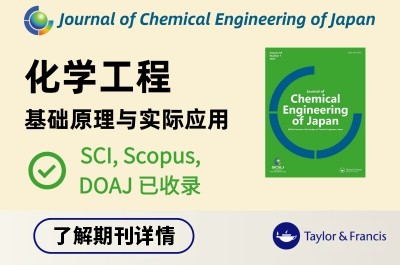



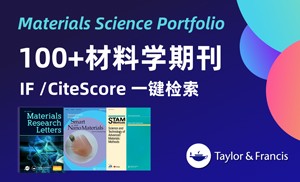

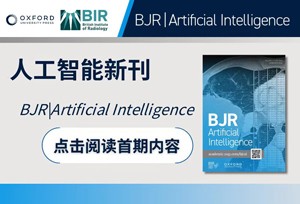



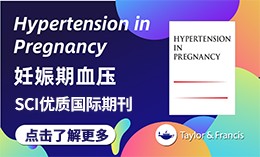







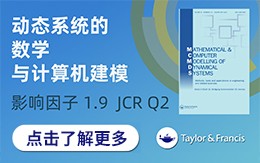

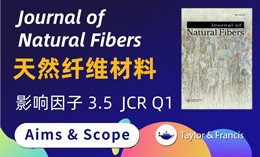





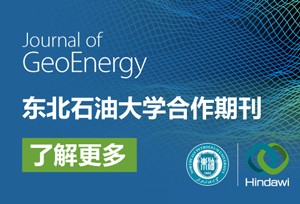
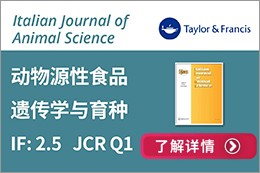














 京公网安备 11010802027423号
京公网安备 11010802027423号